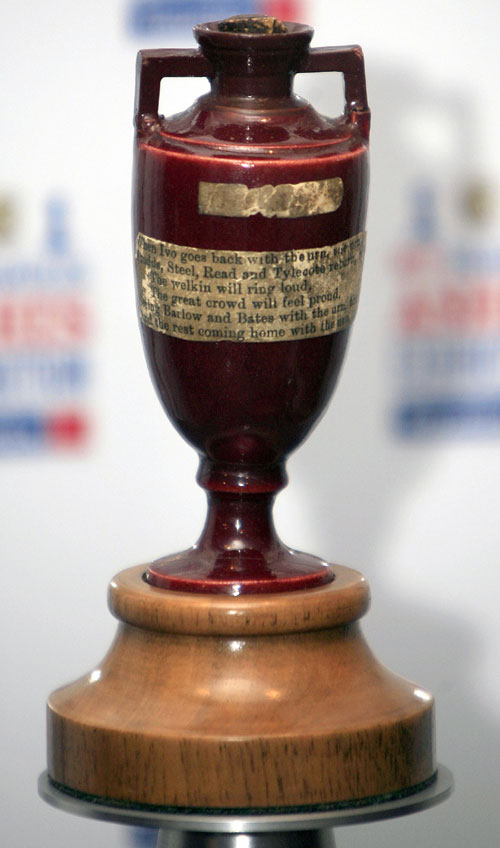News, like nature, abhors a vacuum. Thus the preposterously good run enjoyed by Sir Richard Branson’s brainstorm of feeling ‘uncomfortable’ about flying the Ashes urn back to MCC, on grounds that…well…it’s really not clear, and nor is it immediately obvious why he has anything to do with it. But it was a quiet news day, and RB and a quiet news day were made for one another.
Branson’s grasp of the Ashes, it is fair to say, is not sophisticated; but nor is the issue itself completely straightforward, because the trophy is twice incarnated, as the Ashes (Actual) and the Ashes (Symbol). For those who’ve just joined us, let me briefly explain.
The Ashes (Symbol) derive from the original death notice for English cricket in the Sporting Times after the Oval Test of 1882, placed there by Reginald Brooks aka Watkinshaw, a pioneering work of English sporting masochism but also a riff on the cremation debate. The first cremation in England wasn’t until January 1884 - the work of the latterday druid Dr William Price – and it was at the time of the Oval Test a proverbial hot potato.
The Ashes (Actual) were a colonial jest, a present to Ivo Bligh when he led an England team to Australia a few months later. Noone intended them to become a trophy for anything. Marylebone refers to them, rather endearingly, as a ‘love token’, for one of the instigators of the gesture, Florence Morphy, married Bligh: they became Lord and Lady Darnley.
You can trace the modern history of the Ashes (Symbol) to England’s 1903-4 tour of Australia – the first under Marylebone’s auspices – when the visitors won 3-2. England’s captain Pelham Warner adopted the ‘Ashes’ as a motif for his team’s quest, and wrote a book called ‘How We Recovered the Ashes’. He, however, seems to have been referring to the obituary, not to the urn, which he had never seen. Competition, moreover, actually proceeded for some years without precise agreement about what the Ashes (Symbol) actually denoted. When England visited Australia in 1920-21, for instance, captain Johnny Douglas denied absolutely that the Ashes were at stake. ‘As to the ‘Ashes’,’ he told Australians, ‘people here seem to be labouring under a wrong impression. When an English team took them home [England] some years ago, my idea was that they were to stay there until an Australian XI went home next year to recover them. In the meantime I have just brought an XI here to get some practice for that great occasion.’ In other words, Douglas believed that the Ashes were only at stake on English soil. Not surprisingly, this cut no ice in Australia; the only practice that Douglas’s team experienced was at losing, incurring five consecutive defeats.
It’s possible, I think, to have a civilised disagreement about this. I can understand why some regard the separate existences of the Ashes (Actual) and the Ashes (Symbol) as sub-optimal. Imagine if Arthurian legend ended with Gawain telling Lancelot: ‘I’ve quite a nice cup at home that would pass for a grail. Sod this quest - let’s go jousting instead.’ No Australian expects the Ashes to feature in an extravagant presentation ceremony, manhandled by horny-handed, Foster’s-flourishing cricketers. They simply crave the custody of an object that, originating in Australia, is as much part of its past as England’s.
That, however, is an argument to do with modern sentiment, not with history. The historical argument is cut and dried: Australia is not entitled to the Ashes (Actual). There’s even something slightly petulant and adolescent about the protest: ‘Awwwww, everyone else’s got a trophy. Why can weeeeeee have one too?’ Myself, while I can accept that others may hold other views, I like the difference. To me, Australia and England play for an idea, and should have the courage of the uniqueness of their rivalry. It is for other lesser sports and nations to play for trinkets and gew-gaws.

